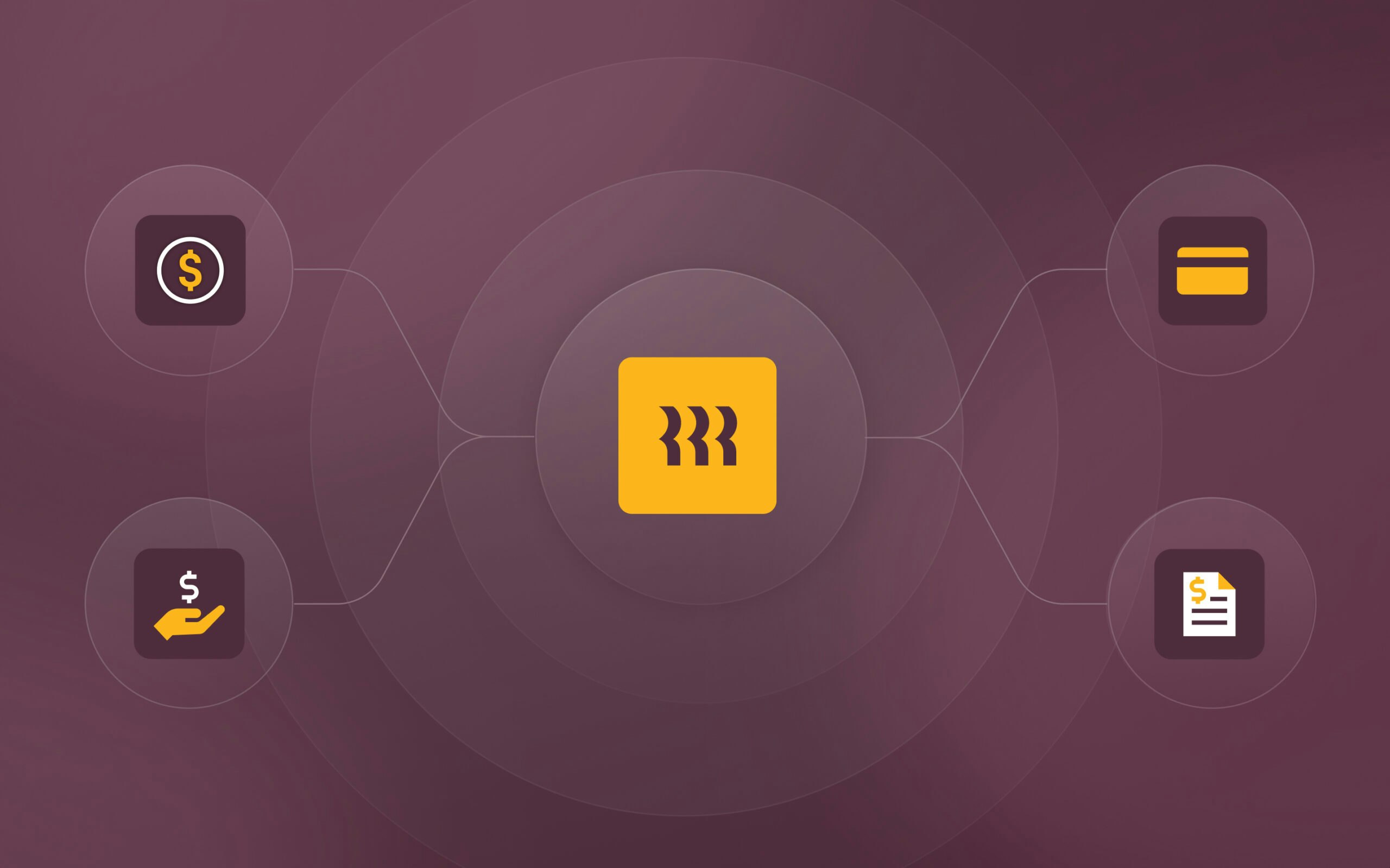Year-end accounting checklist (2024)

Companies handle a myriad of financial transactions over the course of the fiscal year. Tracking credits and debits across every account among all your employees can get unwieldy, so businesses need guardrails to ensure incoming and outgoing spend doesn’t slip through the cracks. Otherwise, bad financial hygiene can leave you ill-prepared for this year’s tax filings and next year’s budgeting and forecasting—potentially limiting your profitability.
A key way to check that every transaction is properly recorded: the year-end accounting close. In this article, we’ll unpack what the year-end close process entails and why it matters. We’ll also walk through crucial steps toward making sure your finances are in order before the new year.
What is the year-end accounting close?
The year-end accounting close is the process of reviewing and reconciling a company’s financial transactions from the past fiscal year to spot discrepancies, make necessary adjustments, and prepare financial statements for tax authorities.
This annual process involves double-checking financial statements to ensure that all income, expenses, assets, liabilities, and equity accurately represent all your fiscal dealings over the past year. Accounts are “closed” when records have counterbalancing debits (money coming in) and credits (money going out). For example, here’s how to close expense accounts:
- Credit the expense account
- Debit the income summary account
Finance teams typically handle this year-end close in addition to more frequent monthly closes. Since the monthly and annual closes happen concurrently at the end of the year, it’s a busy time for finance teams.
Why is the year-end close so challenging?
Reviewing all the transactions your business accumulated over the course of a year takes time. It’s also a cross-functional undertaking that demands collaboration between finance leaders, accountants, and even individual employees who submit expense reports. Here are some of the biggest roadblocks to successful year-end closes:
- Manual mistakes: Logging transactions in spreadsheets and manually scouring through receipts to see if they match your records drains time and creates errors that can be tricky to spot and fix.
- Disorganized workflow: When financial records are scattered across teams, and different types of expenses are stored in different places, accountants may struggle consolidating everything to make sure the books tie out.
- Missed paper documentation: Employees may not always include easy-to-lose receipts and other necessary documentation in their expense reports, meaning bookkeepers and finance team members have to scramble to chase down missing documentation
- Compliance hurdles: Companies need to stay audit-ready and can struggle to prepare financial statements within tight timeframes.
4 benefits of a year-end accounting checklist
A successful closing process can give your company more control and better visibility of its financial standing. Here are the biggest perks:
Maintains compliance
Year-end accounting helps you organize finances, which helps you adhere to Generally Accepted Accounting Principles (GAAP) and prepare for potential audits.
Improves accuracy
End-of-year accounting helps you catch bookkeeping mistakes and collect missing documentation. The result is a reliably up-to-date snapshot of your financial health where debits and credits balance out. And, with accurate accounting records, companies spot fraudulent spend.
Controls costs
When you reconcile transactions and catch bookkeeping mistakes, you can not only save money on tax penalties and vendor overpayments; you can also get a better look at your cash flow, which helps you catch overspend and allocate your resources more efficiently. Better cost control can mean higher profitability and help you grow your business. In fact, 58% of finance leaders see improving cost control as a significant opportunity to grow their company.
Enhances financial reporting
Closing the books out this year can help you make smarter financial decisions next year. A thorough year-end close with up-to-date books paves the way for better financial planning and analysis (FP&A), budgeting, and forecasting. Plus, if you pair your accounting software with a spend management solution that consolidates different buckets of your company’s finances (like vendor bills, payroll, corporate cards, and employee expense reimbursements) into one platform, you open the door to more advanced reporting capabilities.
Year-end accounting close checklist
Here’s what to keep top of mind when closing the books come year’s end.
1. Prepare a financial close schedule
A financial close schedule helps companies pinpoint all the tasks required for year-end close and form a game plan for getting it all done. By delegating subtasks to evenly distribute work, you can avoid last-minute panics.
To make the schedule, list out all your accounts and the reconciliation tasks required and assign them to the appropriate team members. It can take finance and accounting teams weeks to close the books, so make sure you’re planning ahead of time.
2. Compile all necessary documents
Next, try to gather every financial document from the past year that you can get your hands on. This includes:
- Bank and credit card systems
- Inventory counts
- Tax return from the previous year
- Payroll reports
- Account information for loans
- Sales records
You should also make sure you have receipts for transactions. Consider using expense management software that can automatically extract relevant information from photos and map transactions to your general ledger.
3. Review accounts payable and receivable
A crucial part of closing the books out is reviewing accounts payable (money you owe third parties) and accounts receivable (money you expect to receive from customers for a previous purchase) to make sure every transaction is accurately recorded.
Accounts payable review should include verifying vendor invoices and balances along with accrued expenses and liabilities. Accounts receivable review should include verifying customer invoices and balances, bad debts, and write-offs.
4. Collect past-due invoices
Check your invoices, see which are still outstanding, and follow up so you can receive payment from customers before your closing deadline. Setting a due date, and even offering a payment plan for customers behind schedule, can increase the chances of receiving payment. You should also make sure you’re monitoring accruals (records of yet-to-be-incurred expenses or revenues) and recording them in your balance sheet.
5. Reconcile all transactions
For account reconciliation, compare your bank accounts, credit card statements, invoices, receipts, and loan balances with the logs in your general ledger, making sure the amounts match up. In the event of any discrepancies, track down the root of the problem; while it could be an easily fixable bookkeeping error, you could also uncover the misuse of company funds. Adjust your journal entries accordingly. And remember to thoroughly document your process of reconciling accounts.
6. Calculate depreciation expense
Assets can gradually lose value from wear-and-tear and obsolescence. Depreciation expenses account for this loss in value over time. Most accountants calculate it using the straight line method, which involves estimating how long companies expect the asset to generate revenue (e.g., its useful life) and how much companies can expect to earn if they sold the item when no longer used (e.g., its salvage value).
To calculate straight line depreciation, subtract the salvage value from the asset’s initial cost, then divide that value by the estimated useful life. List it as a contra asset on your balance sheet, record it on your income statement as an expense, and then you can use it to lower your tax burden.
7. Count and value inventory
See how much inventory you still have at the end of the fiscal year and record it as an asset on your balance sheet. You can calculate the ending inventory by taking your beginning inventory, adding any net purchases (inventory acquired during the year), and then subtracting the cost of goods sold (COGS).
You should compare your ending inventory with what’s in your books and address any discrepancies.
8. Assess payroll records
You also need to double-check accuracy of all your payroll records—including tax forms like W-2s and 1099s, timesheets, and benefits enrollment paperwork. If you made any payroll changes to individual employees—for instance, to account for promotions or new tax withholdings after someone moves—make sure your books accurately reflect the adjustments.
9. Prepare financial documents
Your year-end close should prepare you for your annual tax filings and help you stay audit-ready. With that in mind, in addition to having your tax forms ready, prepare an income statement (also known as a profit and loss or P&L statement) to get a birds-eye summary of your revenues, expenses, and net income. You also want an up-to-date balance sheet that organizes your assets, liabilities, and shareholder’s equity, and a cash flow statement to track incoming and outgoing funds.
10. Create backups of important information
You don’t want to put painstaking work into reconciling a year’s worth of financial transactions only to accidentally misplace or mishandle your records. Make sure your data is safely stored and securely backed up on the cloud to avoid losing or leaking sensitive financial information.
Rippling: Easy expense reporting and management
Rippling's expense management software consolidates all of your company’s finances—from payroll and benefits to corporate cards and expense management–giving you an up-to-date view of cash flow across your company and offering unprecedented control over spending patterns.
While most expense management solutions only allow for basic employee-manager approval chains, with Rippling expense management’s advanced policy engine, you can set hyper-custom policies based on the vendor, dollar amount, and expense category, helping you block out-of-policy expenses with ease. You can also tee up automated workflows that help you control spend, like triggering an alert when a department’s expenses sharply increase.
What’s more, Rippling auto-categorizes expenses to your general ledger in real-time, saving bookkeepers hours of work manually logging transactions from different vendors to the right expense categories and reconciling them at the end of reporting periods.
With Rippling you can:
- Automatically route expenses and bills to the right approver every time.
- Flag out-of-policy spending with hyper-custom policies, like by vendor or value, for further review.
- Close the books faster with AI-powered transaction categorization, and integration with your accounting systems.
Frequently asked questions
How do I close year-end accounting entries?
To close year-end accounting entries, companies need to reconcile transactions like bank statements, vendor invoices, and corporate card statements by matching up receipts and other documentation with general ledger entries, making sure the balances line up.
To record year-end closing entries in your journal, you should:
- Debit revenue accounts and credit income summary
- Credit expense accounts and debit income summary
- Credit retained earnings once income summary accounts are closed
- Transfer balances from dividends to retained earnings
What are year-end journal entries?
Year-end journal entries are changes accountants make to general ledger items to help companies accurately record all their financial transactions. They can include both year-end adjusting journal entries (YJE), which make corrections or additions to general ledger accounts, and closing entries, which move financial data from temporary accounts to permanent accounts on your balance sheet.
How should businesses handle outstanding invoices at year’s end?
For accounting purposes, companies should identify which invoices are still open, categorize them according to how past-due they are (e.g., in one, two, and three month groupings), and see if you can collect funds you’re owed before the fiscal year end. If you can’t collect, you should try to institute a payment plan and consider filing a bad debt provision for the money you anticipate being owed into the next year.
Schedule a demo with Rippling today
This blog is based on information available to Rippling as of October 1, 2024.
Disclaimer: Rippling and its affiliates do not provide tax, accounting, or legal advice. This material has been prepared for informational purposes only, and is not intended to provide or be relied on for tax, accounting, or legal advice. You should consult your own tax, accounting, and legal advisors before engaging in any related activities or transactions.










